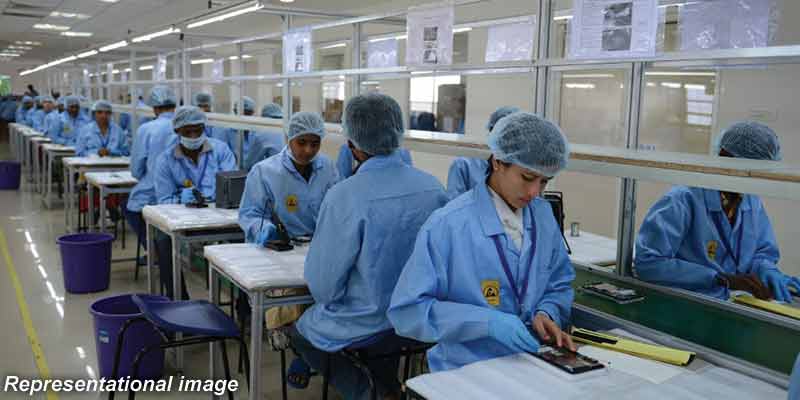- India
- Sep 25
- Kevin Savio Antony
Govt celebrates 10 years of ‘Make in India’
• The Modi government’s flagship initiative ‘Make in India’ marked its 10th anniversary on September 25.
• Prime Minister Narendra Modi said that it has led to a rise in exports in different sectors, building capacities and strengthening the economy.
• Under the initiative, launched on September 25, 2014, a series of measures have been taken by the government to boost local manufacturing.
What is ‘Make in India’ programme?
• The Make in India initiative was launched by Prime Minister Narendra Modi in September 2014 as part of a wider set of nation-building initiatives. Devised to transform India into a global design and manufacturing hub, ‘Make in India’ was a timely response to a critical situation.
• It is being led by the Department for Promotion of Industry and Internal Trade (DPIIT), Ministry of Commerce and Industry.
• The initiative is an open invitation to potential investors and partners across the globe to participate in the growth story of ‘New India’.
• Since its launch, ‘Make in India’ has made significant achievements and is now focusing on 27 sectors under Make in India 2.0.
Objectives:
• Target of an increase in manufacturing sector growth to 12-14 per cent per annum over the medium term.
• An increase in the share of manufacturing in the country’s Gross Domestic Product from 16-25 per cent by 2022.
• To create 100 million additional jobs by 2022 in manufacturing sector.
• Creation of appropriate skill sets among rural migrants and the urban poor for inclusive growth.
• An increase in domestic value addition and technological depth in manufacturing.
• Enhancing the global competitiveness of the Indian manufacturing sector.
• Ensuring sustainability of growth, particularly with regard to the environment.
Impact of ‘Make in India’ programme
i) Foreign Direct Investment (FDI): Since 2014, India has attracted a cumulative FDI inflow of USD 667.4 billion (2014-24), registering an increase of 119 per cent over the preceding decade (2004-14).
• This investment inflow spans 31 states and 57 sectors, driving growth across diverse industries.
• Most sectors, except certain strategically important sectors, are open for 100 per cent FDI under the automatic route. FDI equity inflows into the manufacturing sector over the past decade (2014-24) reached $165.1 billion, marking a 69 per cent increase compared to the previous decade (2004-14), which saw inflows of $97.7 billion.
ii) Production Linked Incentive (PLI) Scheme: The PLI Schemes introduced in 2020 have resulted in Rs 1.32 lakh crore ($16 billion) in investments and a significant boost in manufacturing output of Rs 10.90 lakh crore ($130 billion) as of June 2024. Over 8.5 lakh jobs have been created directly and indirectly due to the initiative.
iii) Exports & Employment: India’s merchandise exports surpassed $437 billion in FY 2023-24. Exports have surged, with an additional Rs 4 lakh crore generated due to the PLI schemes, while total employment in the manufacturing sector increased from 57 million in 2017-18 to 64.4 million in 2022-23.
iv) Ease of Doing Business: India’s commitment to improving business conditions is evident in its sharp rise from 142nd rank in 2014 to 63rd rank in 2019 in the World Bank’s Doing Business Report.
• Over 42,000 compliances have been reduced, and 3,700 provisions has been decriminalised. The Jan Vishwas (Amendment of Provisions) Act, 2023, passed by Lok Sabha on July 27, 2023 and Rajya Sabha on August 2, 2023, which has decriminalised 183 provisions across 42 Central Acts.
Key Reforms
i) Semiconductor Ecosystem Development: Semicon India Program, worth Rs 76,000 crore, aims to provide an impetus to semiconductor and display manufacturing by facilitating capital support and technological collaborations. India has developed policies to support every segment of the semiconductor ecosystem, not just focusing on fabs but also including packaging, display wires, OSATs, sensors, and more.
ii) National Single Window System (NSWS): Launched in September 2021, this platform simplifies the investor experience, integrating clearances from 32 ministries/departments and 29 states/UTs, facilitating rapid approvals.
iii) PM GatiShakti: PM GatiShakti National Master Plan (NMP), a GIS based platform with portals of various ministries/departments of government, was launched in October 2021. It is a transformative approach to facilitate data-based decisions related to integrated planning of multimodal infrastructure, thereby reducing logistics cost.
iv) National Logistics Policy (NLP): Aimed at reducing logistics costs and increasing efficiency, the NLP, launched in 2022, is key to making Indian products more globally competitive.
v) Industrial Corridors & Infrastructure: The development of 11 industrial corridors under the National Industrial Corridor Development Programme has seen the approval of 12 new projects with a projected investment of Rs 28,602 crore. These corridors enhance India’s competitiveness by providing world-class infrastructure.
vi) One District One Product (ODOP): Promoting indigenous products and craftsmanship across India, the ODOP initiative has fostered local economic development, with Unity Malls being set up in 27 states to provide platforms for these unique products.
vii) Startup India: The government with intent to build a strong ecosystem for nurturing innovation and encouraging investments launched the Startup India initiative on January 16, 2016. Sustained efforts by the government under the Startup India initiative have led to an increase in the number of recognised startups to 1,40,803 as on June 30, 2024, which have created over 15.5 lakh direct jobs.
• From landmark reforms such as the Goods and Services Tax (GST) and the reduction in corporate tax, to far-reaching measures aimed at improving ease of doing business and streamlining FDI policies, every step is geared towards creating a more investment-friendly ecosystem.
• Initiatives like the Phased Manufacturing Programme (PMP), public procurement orders, and Quality Control Orders (QCOs) are focused on driving domestic manufacturing and enhancing product quality.
• The government’s response to the challenges posed by COVID-19, through the Atmanirbhar Bharat packages and targeted investments under the National Infrastructure Pipeline (NIP) and National Monetisation Pipeline (NMP), has turned adversity into an opportunity for growth.
• Tools such as the India Industrial Land Bank (IILB), Industrial Park Rating System (IPRS), and the National Single Window System (NSWS) further streamline processes for investors.
• Additionally, Project Development Cells (PDCs) in various ministries ensure that investment proposals are fast-tracked, making India a more attractive destination for global and domestic investors.
• These efforts collectively reinforce India’s position as a burgeoning hub for manufacturing and innovation.
(The author is a trainer for Civil Services aspirants.)



